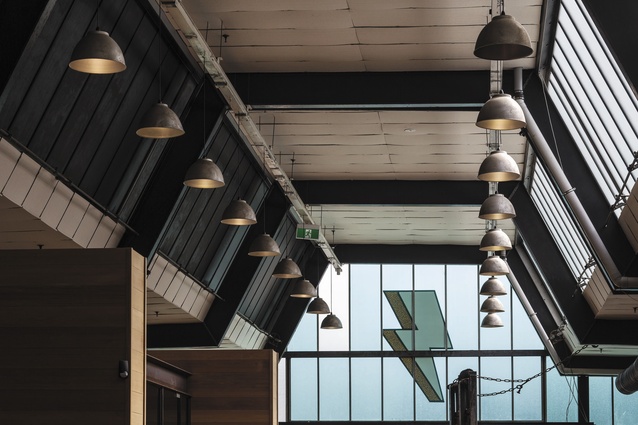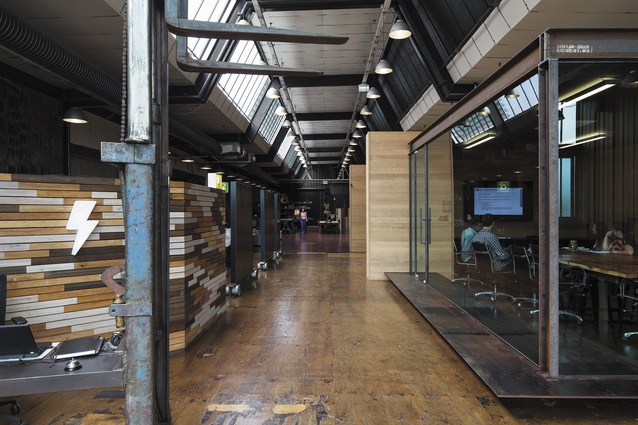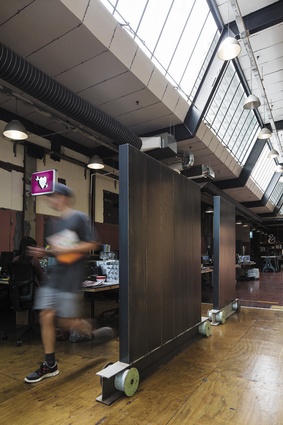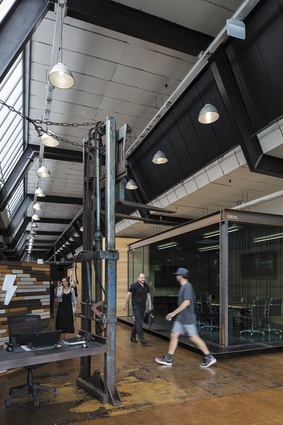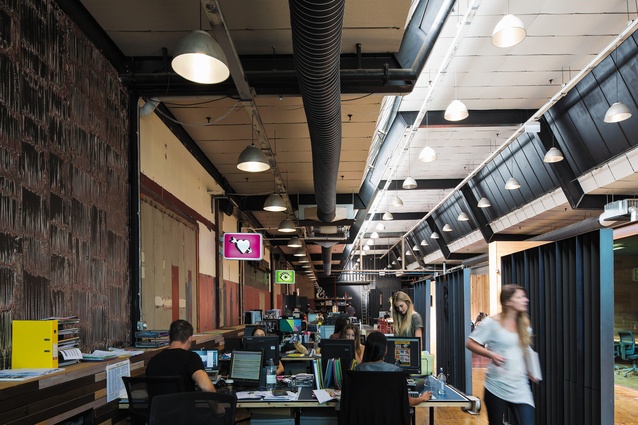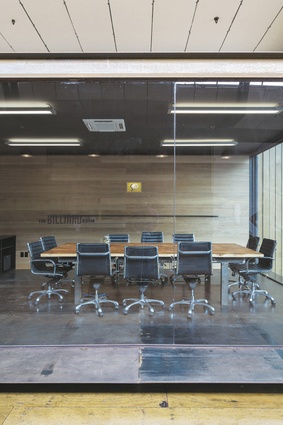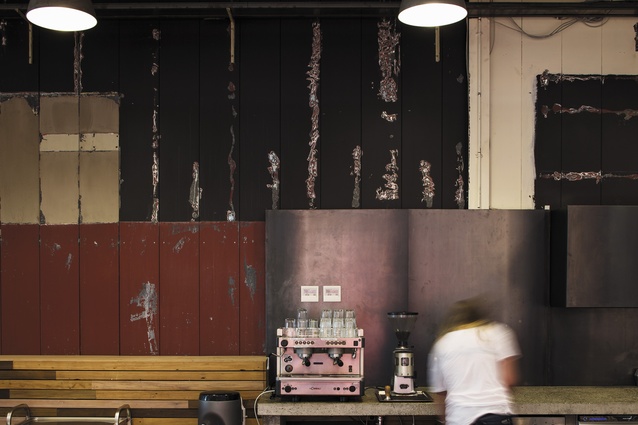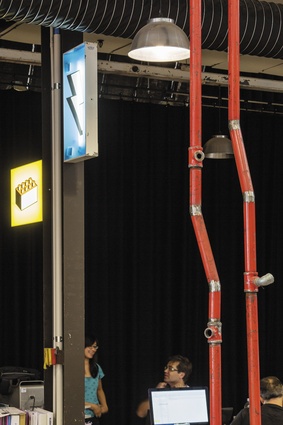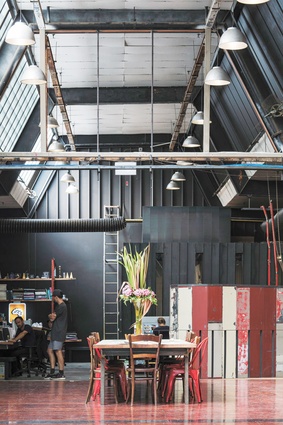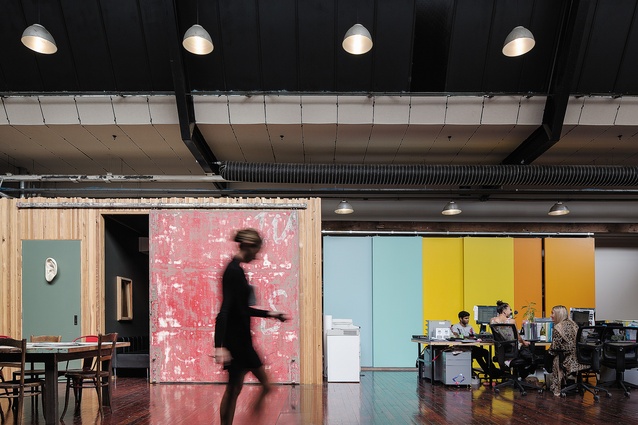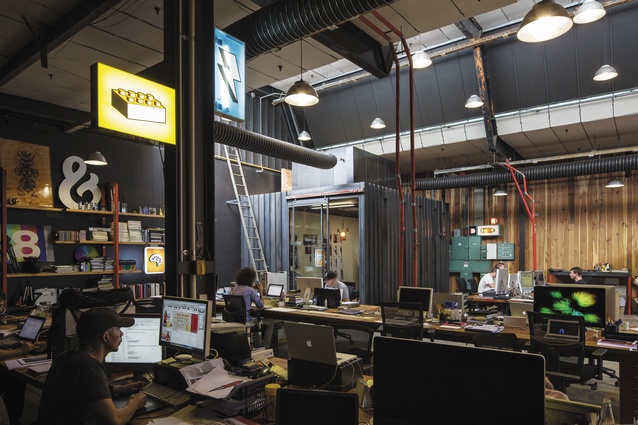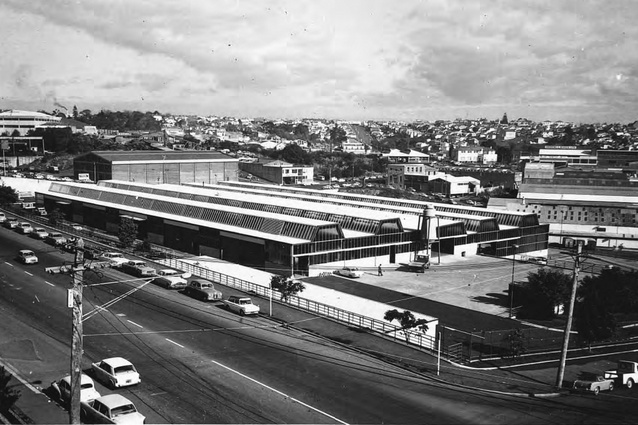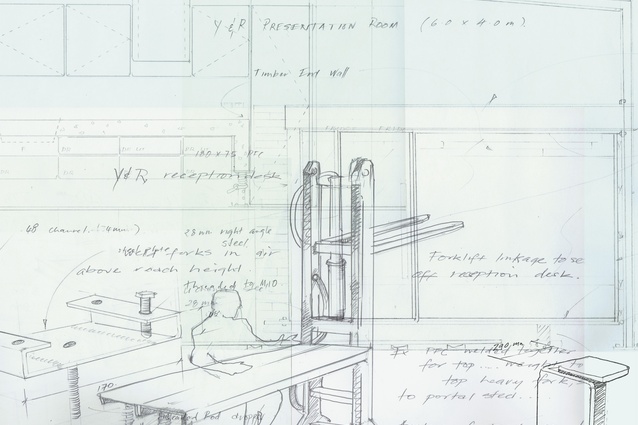Y&R
To the surprise of, well, probably no one, given the poor climate for development post investment bankers ruining things for everybody, the old Auckland City Council Workshops live on to fight another day. The City Works Depot, as it is now called, was once scheduled to be Rhubarb Lane, although herbaceous perennials were not what that development was about. It was an ambitious and, it must be said, quite interesting, commercial-residential, multiple architect-designed precinct. For a time we were even introduced to some new terminology; the “aPod”, for instance, a new type of hybrid residential-commercial unit.
But let’s prune this potted history back to the roots. Rhubarb Lane’s eventual failure led to the acquisition of the site by Simon Rowntree and James Brown, who were fresh from reworking a block of hinterland Newmarket into the pleasant collection of cobbled lanes and boutique-sized retail premises known as Osbourne Lane.

The land’s acquisition by those with the readies must have been a no-brainer. There’s no site like it in town. Nat Cheshire, who worked with Rowntree and Brown to masterplan both Osbourne Lane and the City Works Depot, succinctly points out its advantages: “The most extraordinary thing about it, aside from the great buildings, is that there is three-and-a-half hectares of land in the middle of the city with 900 car parks on it, and it sits right on the major motorway interchange.”
The great buildings Cheshire refers to are the old workshops designed by former Auckland City architect Ewen Wainscott (1920-1995; MBE, FRIBA, FNZIA) in the late 1960s.
Wainscott’s workshops picked up a bronze medal for industrial architecture at the NZIA awards in 1968 and silver in 1969, and Jeremy Joseph, architect at Cheshire, who undertook considerable research on the provenance of the buildings, describes them as one of the first prefab constructions in the country, and thinks they may have been modelled on a tank manufacturing plant in the USA. At 100m, the buildings are immensely long. Their skin is thinly pressed steel; it’s fine profile is a stark contrast to the heavy works of its former use, and the tilted glass of the roof form is angled to maximise good natural light. Joseph kindly passed on the NZIA citation, published in Home and Building (April 1, 1970) magazine, where the structure was described as “a credit to the city and a good piece of urban design”. In the earlier, December 1969 issue of Home and Building, which referred to the bronze medal, it was said that, “This building serves [its] functions well without detraction from the visual delight of its shaped roof lights covering light steel frames and its large access doors framed by light glazing. The building is a credit to the city and a leader in local authority architecture.”
An appreciation for the built form at the Depot transcends generations. Cheshire, comparing the workshops to his studio’s long-term works at Britomart, describes them as having, “a beautifully ordered architectural logic that lets them be unclipped and re-clipped and modified a hell of a lot easier than a 130-year-old brick trading building down on the waterfront.”
“It’s the great dream of modernism, really, made manifest in those buildings. But they were designed for an enormously different purpose to that which we converted them, so there were all sorts of challenges,” he says.
The first challenge, and possibly the greatest, was socially, rather than architecturally, programmatic. City Works Depot is a much different vintage from the old bricks-and-mortar seafaring and trading buildings of downtown Auckland, yet there are parallels in terms of developing a precinct for success that go beyond clearing out, cleaning up and breaking down into lettable parcels. What is important, is the delicate process of community building, getting tenants, such as Y&R, who Cheshire describes as essential to the success of the fledgling precinct.
“They were critical first-players in that community. When I first met with their team,” says Cheshire, “what we talked about, aside from our vision for how we were going to transform the place, was above all how we were going to build the community. With the idea being that if we get a critical mass of people all engaged in the same sorts of activities but in very different ways then it would become self sustaining.
“We started our studio around the remaking of Britomart,” he says. “That’s the project around which the studio was built, and that was a really good kind of opportunity to kind of sit alongside an intelligent landholder and develop a understanding of an overarching principle that cities are things that are grown. Malls are built all at once; cities you do step by step. There’s a critical thing that happened at Britomart, the process was about taking baby steps.”
One such step is “rehabilitating a broken part of the city in the minds of the public”. Given its recent history as a gigantic car park, the City Works Depot could certainly be considered a precinct with which the general public – and of course prospective tenants – might need some re-familiarisation.
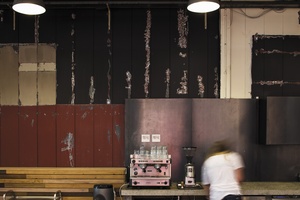
When it came to acquiring tenants, it was a matter of looking to the fringes, says Cheshire, “those funny, in-between parts of the city – the bottom end of Parnell, the back end of Grey Lynn – and to people who were driving really interesting, creative businesses, and who, by culture, were committed to being not in generic space but in more adventurous space.” These potential tenants were not necessarily fashion-related; that sector, the “darling of urban reinvention” over the past few years, was perhaps showing signs of exhaustion. As a loose rule of thumb City Works’ planners decided on a “no plasterboard” philosophy, a diktat to the style of fit-out that helped define tenants appropriate to the buildings.
“Part of it was finding the people with the right attitude to the buildings,” says Cheshire. “They don’t offer nearly the regular amenity of a grade A, pancake-style office development. It was about finding people who would embrace the profiled steel walls and the steel girders and columns flying through the spaces. If they wanted to come in and build plasterboard partitions or suspend acoustic tiles then they were looking in the wrong place.
The City Works Depot is a place where people can go when the want to transform themselves.”
Appropriately, given the old council workshop’s history of making, City Works Depot’s new owners were also interested in makers of things, people inventing things every day. “Those things could be intellectual, but they could also be physical. When we went through the leasing process, it was about saying no to certain groups.
“Y&R turned up, and it is engaged in a creative industry as a day-to-day activity, and then the Three Beans roastery arrived, and they’ve got a truck that arrives at five in the morning, they’re off loading sacks of beans and firing up the roaster. They’re doing all that on site, it’s not just a kid in skinny jeans standing behind a espresso machine, there’s actually another kind of work going on there. The same with Brothers Brewery, the same with Al Brown, the same with the Food Truck. All those people, whether they’re writing software, or brewing beer on site, are making something.”
James Hurman, Y&R’s managing director, shares Cheshire’s enthusiasm for the precinct. For the advertising agency the change of scenery coincides with a time of reinvention. Y&R departed its Parnell premises, a building it had occupied since the 1980s, for a new start on the other side of the city and it is, says Hurman, “like night and day, from where we were.”
“We were in a horribly divided up building that didn’t allow us to be a unified group. It had no flow, and you could never all be in one area. It was kind of boring. It felt dark and closed in.”
The new office was an opportunity to signal to the marketplace that the ad agency had been reworked, was refreshed, says Hurman. It had also been designed with a range of client-servicing functions that used to be out sourced, and which allows it to be nimble, to be able to turn ideas into work, inhouse, in a very short amount of time. The effects of the cultural change the company has undertaken are already obvious.
“It’s amazing the difference it makes. In some ways where you put your desk is a superficial thing, but the difference it make to the culture is enormous. It’s as if it communicates that its time to live up to the building. If you’re in a place that is tired and old and not very adventurous then you start to think in that way. If you surround yourself with things that are more creative and adventurous, then you start to think in that way. I think the environment will facilitate a much better product. For example, what we didn’t have in the old space was all the production facilities that we have in here. Now we’ve got a photo studio, an edit suite and sound recording. There’s the ability to react very quickly, have ideas and then quickly make them and get them out. Time is a massive killer of ideas. The longer something takes to do, the more chances there are for someone to say no. It only takes one person to say no and an idea is dead. So, when you can do things super quick, and maintain the enthusiasm and energy around an idea, then that’s a successful project. I think the production aspects of this place will allow us to do more and more of that. Everyone gets a kick out of that stuff. It’s so gratifying.”
For the design of its premises, Y&R chose not to go down the typical route of architect, project manager and builder, opting instead for a more streamlined process that involved one man and his team. Flathead Design’s Jason Dempsey was responsible for the concept and execution of the Y&R’s interior. Dempsey has a reputation as a hands-on designer who executes his concepts on-site – the sort of designer that clearly would clearly have no issue with a “no plaster board” rule. His work at Y&R, which he describes in detail overleaf, utilises a healthy dollop of salvaged and re-used materials. As a man quite comfortable in a workshop environment, he demonstrates a good degree of respect for the building and those that formerly worked there.
“A lot of the older tradesmen always had stories about this place, because that’s where it all started. This is where they built the city, basically. This is where they set up the infrastructure; where they trained the guys and had their workshops, which they don’t have any more obviously, it’s all out sourced. The history of these buildings is incredible.”

